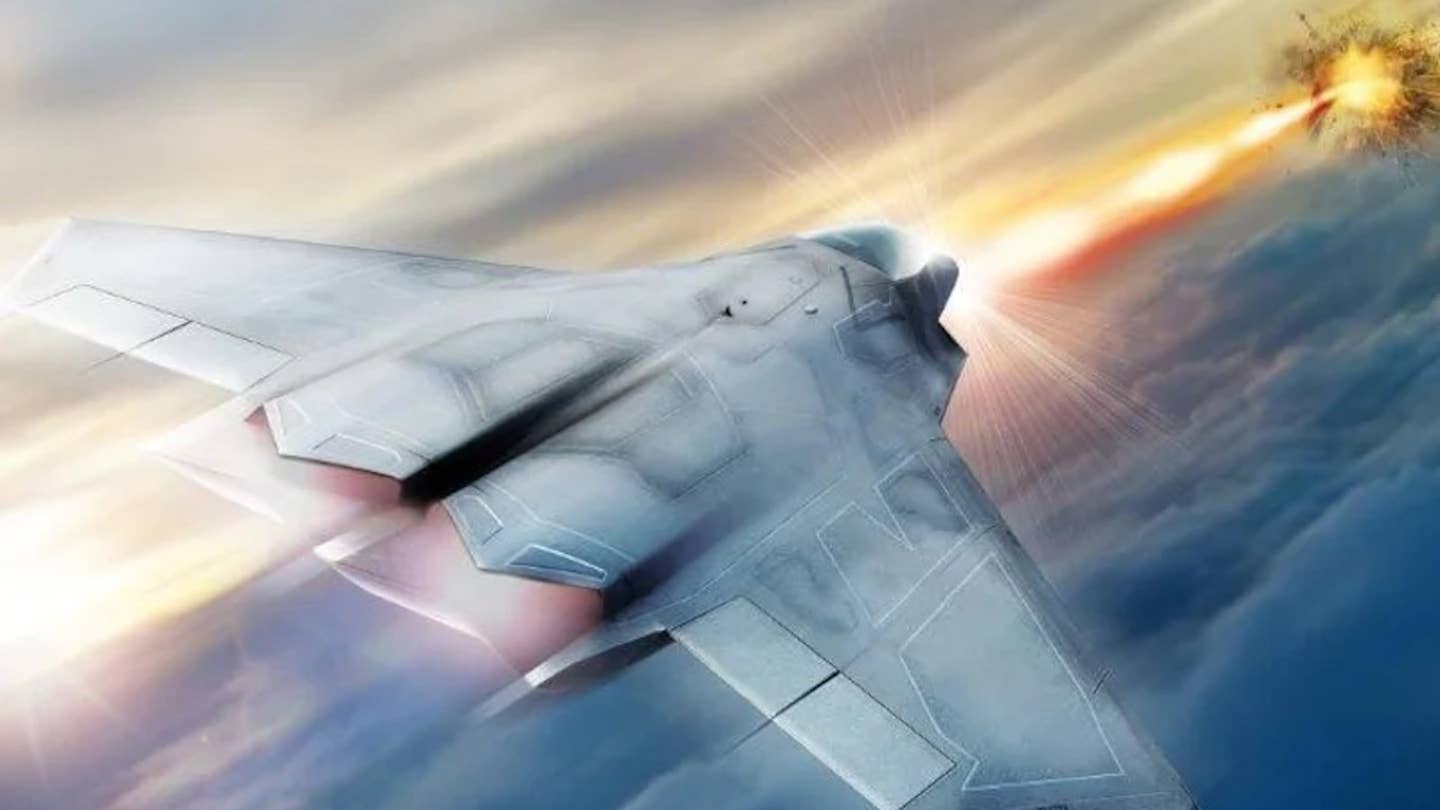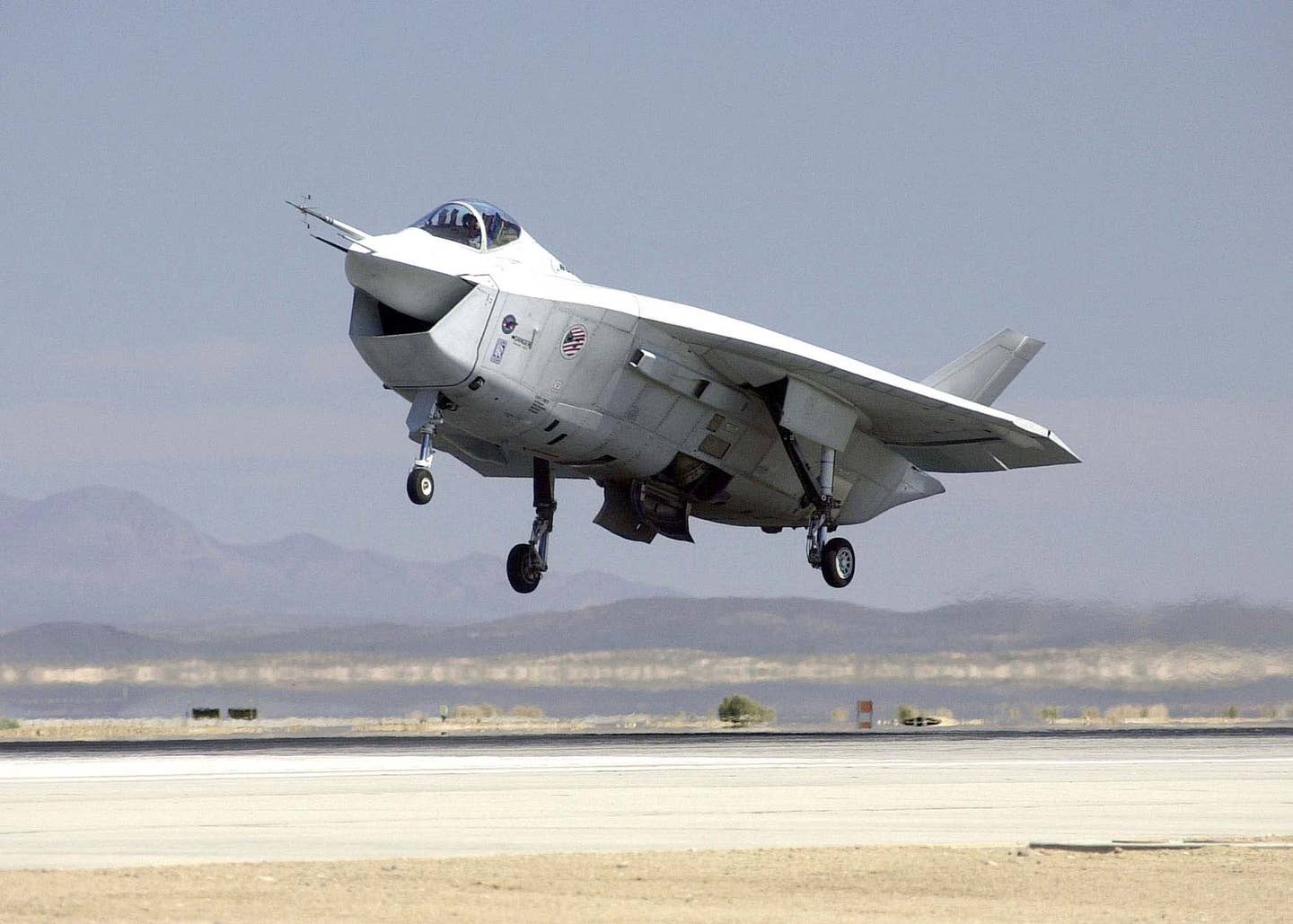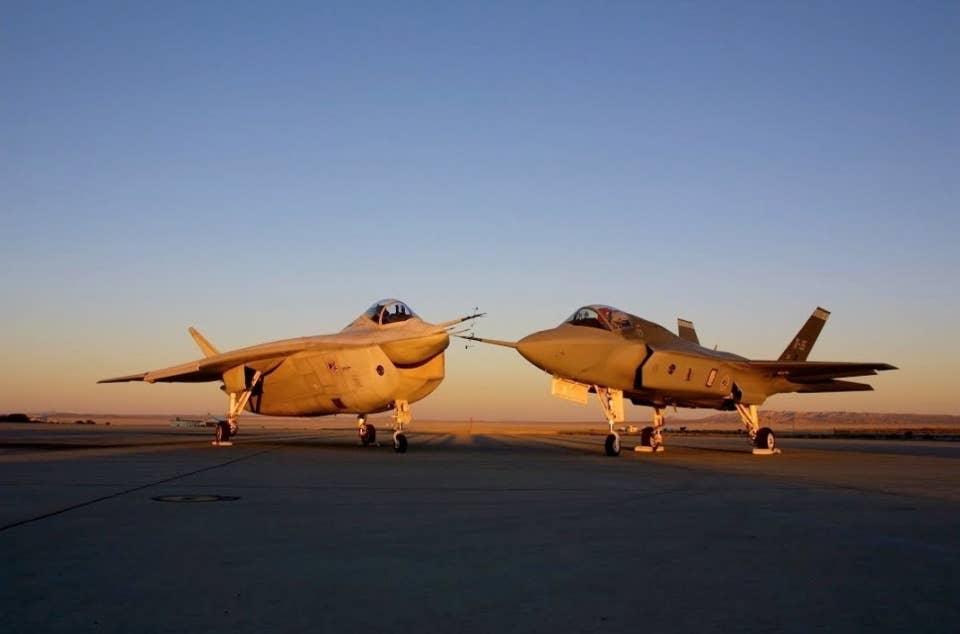The race to arm the US Air Force with the Next Generation Air Dominance (NGAD) sixth-generation crewed fighter has narrowed to two top contractors, with the final decision expected to be announced next year in what is perceived as a winner-takes-all competition.
The information was shared during a recent podcast episode on the Defense & Aerospace Report, featuring Vago Muradian, the editor-in-chief and host, and J.J. Gertler, director of The Defense Concepts Organization and senior analyst at the Teal Group.
The Defence & Aerospace Report also revealed that at least three NGAD demonstrators are currently in existence. In the podcast, the NGAD terminology primarily pertains to the crewed sixth-generation combat jet.
However, the program also includes the development of diverse systems like drones, networking ecosystems, and battle management capabilities, expanding beyond just the crewed sixth-generation combat jet.
The report, which cited unidentified sources involved in the program, said that the presence of three NGAD demonstrations suggests that there were once three prime contractors or teams participating, which have subsequently been reduced to two.
"Our very own Ron Epstein of Bank of America securities has learnt that there are three [#NGAD] demonstrators" ~ Vago Muradian pic.twitter.com/erxHfITrho
— AirPower 2.0 (MIL_STD) (@AirPowerNEW1) June 23, 2023
The expected firms at the forefront of the competition are Boeing, Lockheed Martin, and Northrop Grumman, given their established positions as leading US combat aircraft manufacturers.
So far, the USAF has not disclosed any information regarding the prime contractors engaged in the NGAD program or potential teaming arrangements where different companies collaborate on the proposals.
But, in the past, all three prominent US defense giants have shown interest in the program. As a result, there was a general assumption that all three actively sought the NGAD contract.
Earlier, five firms were awarded contracts for the Next Generation Adaptive Propulsion (NGAP) program. This 10-year effort seeks to develop a prototype engine for a next-generation fighter.

Now, the NGAD program is left with just two competitors. Although one demonstrator design has been operational for several years, it remains uncertain if all three mentioned in the podcast are flying demonstrators, whether they are crewed or not, or if some could be static test airframes.
Moreover, these demonstrators might primarily serve as testbeds to investigate subsystems and technologies rather than directly representing airframe designs intended to produce NGAD combat jets.
The anticipated winner-takes-all outcome of the NGAD competition intensifies an already fiercely contested program. Nonetheless, the companies that do not secure contracts for the next-gen fighter program could have opportunities within the broader NGAD program.
The technologies developed by these companies can still find applications in other subsystems intended to be incorporated into the sixth-generation warplane.
Having two competing teams for the crewed combat jet component of NGAD is not entirely unexpected.
Similar scenarios have occurred in the past, such as the Joint Strike Fighter program that resulted in the F-35 stealth jet, which involved competing designs from Boeing and Lockheed Martin.
Additionally, in the 1980s, the Advanced Tactical Fighter program witnessed competition between Lockheed Martin and Northrop Grumman, with Lockheed ultimately chosen to build the F-22 Raptor.

How Lockheed Outperformed Boeing In Joint Strike Fighter Program?
In 1993, the US government initiated the Common Affordable Lightweight Fighter Project (CALF) to replace older fighter aircraft, including the F-15 and F-16, and create a cost-effective platform for the next generation of US fighter planes.
CALF later became part of the Joint Strike Fighter Program (JSF), and a competitive bidding process began. Following the initial selection round, Boeing and Lockheed Martin emerged as the leading contenders and were each awarded contracts to develop two concept demonstrator fighters.
Between 1997 and 2001, both Boeing and Lockheed were assigned the responsibility of developing and conducting flight tests on two aircraft, each capable of demonstrating the capabilities required for three distinct variants: conventional take-off/landing, short take-off/vertical landing, and carrier take-off/landing.
The prototype developed by Boeing was designated as the X-32, while Lockheed Martin’s prototype received the designation of the X-35.
The X-32 prototype employed a large delta wing, which served as the basis for all three fighter variants mandated by the JSF program. However, the aircraft’s appearance was widely criticized as ugly.

Although there were indications that Boeing intended to make significant design changes in future models, such as a sleeker delta wing and redesigned nose, the unconventional aesthetics of the X-32 demonstrator did not favor Boeing’s image.
Despite its distinct design, the X-32’s performance was comparable to Lockheed Martin’s X-35 concept demonstrator. However, the X-32 faced challenges. The direct lift system was prone to pop stalls, where engine malfunction occurred due to hot air ingestion.
Eight months into the competition, the aerodynamic requirements of the JSF were modified upon the Navy’s request. Although Boeing engineers made minor adjustments to the tail, there was insufficient time to significantly redesign the delta wing to fully align with the new JSF guidelines.
By July 2001, Lockheed’s X-35 had successfully demonstrated its ability to perform a short take-off of just 500 feet, achieve supersonic speeds, and execute a vertical landing, all in a single flight.

On the other hand, Boeing’s X-32 showcased supersonic flight capabilities and vertical landings, but these accomplishments were not achieved within a single flight.
Vertical take-off/landing capability was a fundamental requirement outlined in the JSF guidelines, and the Pentagon did not resonate with Boeing’s approach to integrating short take-off/vertical landing (STOVL) capabilities.
In an old interview, the chief test pilot for the X-32 program, Commander Phillip “Rowdy” Yates, also acknowledged that one of the challenges Boeing faced was the inability of their design to perform the short take-off/vertical landing test at Edwards Air Force Base.
To conduct the STOVL exercise, Boeing would have needed to transport their STOVL aircraft to Pax River, where the denser air at sea level would provide greater thrust and a safety margin to ensure the aircraft’s hover capability.
Yates concurred that the X-35 had a more fighter-like appearance than the X-32. He noted that while the X-32 may have resembled an A-7, it did not have the aesthetically pleasing or conventional fighter look of the X-35.
Boeing was aware of this issue and sought to address it by adopting the mantra, “You’re taking it to war, not to the senior prom,” which gained significant attention and support.
He also highlighted considerable concern about the disparity between Boeing’s initial design and the design they ultimately presented as their proposal for production.
In contrast, he noted that Lockheed’s design closely resembled what they had submitted in their production proposal. This discrepancy in design evolution caused significant consternation among stakeholders.
In October 2001, Lockheed Martin’s X-35 was officially announced as the winner over Boeing’s X-32. The loss of the JSF program was devastating for Boeing, significantly impacting its morale and outlook.
Todd Blecher, a former Boeing spokesman assigned to the JSF program, described the emotional impact: “We were all crushed.”
Nonetheless, Boeing accepted the outcome and considered the X-32’s research and development as a strategic investment that yielded dividends in subsequent projects such as the F/A-18E/F Super Hornet fighter and X-45A drone.
- Contact the author at ashishmichel(at)gmail.com
- Follow EurAsian Times on Google News




